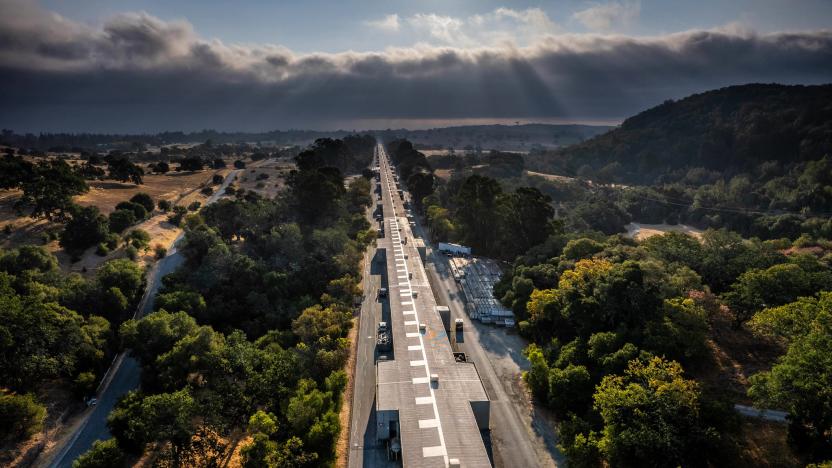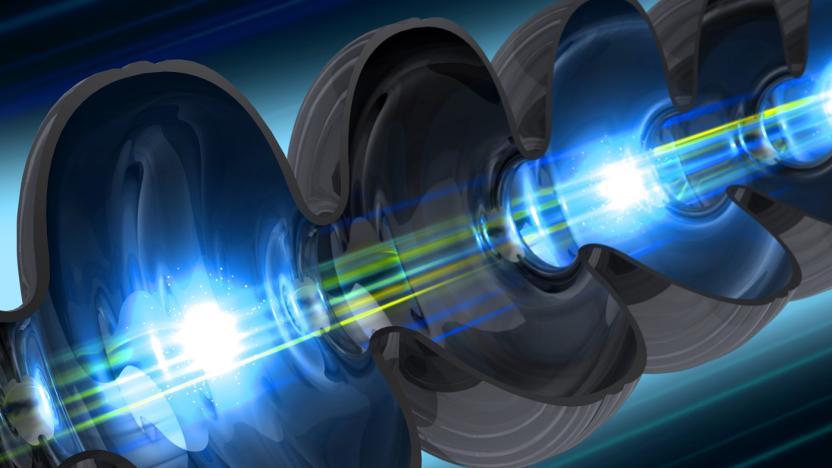LCLS
Latest

SLAC's newest laser works best when it's colder than outer space
It took nearly a decade but the new super-powerful, super-chilled coherent laser system at Stanford's SLAC is ready to unlock the quantum realm's secrets with massively powerful X-ray blasts.

Watch the most powerful x-ray laser zap droplets of water
Scientists at Stanford University's SLAC National Accelerator Laboratory wanted to better understand explosions caused by x-rays, and we got a cool short movie out of their efforts. They filmed droplets and jets of water being vaporized by the lab's Linac Coherent Light Source (LCLS) -- the most powerful x-ray laser in the world. Claudiu Stan, one of those scientists, explained that "understanding the dynamics of these explosions will allow [them] to avoid their unwanted effects on samples." On the other hand, the data they gathered could also lead to new ways of using those explosions to trigger changes in their samples.

World's most powerful X-ray laser will get 10,000 times brighter
If you think that Stanford's use of an super-bright X-ray laser to study the atom-level world is impressive, you're in for a treat. The school and its partners have started work on an upgrade, LCLS-II (Linac Coherent Light Source II), whose second laser beam will typically be 10,000 times brighter and 8,000 times faster than the first -- up to a million pulses per second. The feat will require an extremely cold (-456F), niobium-based superconducting accelerator cavity that conducts electricity with zero losses. In contrast, the original laser shoots through room-temperature copper at a relatively pedestrian 120 pulses per second.

Crazy fast X-ray laser catches chemical reactions in the act
Scientists at the Department of Energy's SLAC laboratory have taken a "molecular movie" of a chemical reaction for the first time. The results of their research could give new insights into to how chemical bonds form, helping researchers better understand biological processes. To give you an idea of the difficulty of the feat, the critical part of the reaction -- the breaking apart of a ring-shaped gas molecule -- takes a mere 200 femtoseconds (quadrillionths of a second). To record such a rapid process, the researchers used the two mile long Linac Coherent Light Source (LCLS) to fire X-ray laser pulses a mere 25 quadrillionths of a second in duration.

Diamond hones DOE X-ray laser howitzer to razor-sharp precision
The US Department of Energy's SLAC accelerator lab already has a pretty useful X-ray laser -- the Linac Coherent Light Source (LCLS). But, recent modifications to the device have scientists drooling over its new found potential. Using a thin wafer of diamond, the Stanford-run lab filtered the beam to a lone frequency, then amplified it in a process called "self-seeding." That's given the world's most powerful X-ray laser even more punch by tossing out unneeded wavelengths which were reducing its intensity. The tweaks allow scientists across many fields to finesse and image matter at the atomic level, giving them more power to study and change it. According to the lab, researchers who came to observe the experiment from other X-ray laser facilities "were grinning from ear to ear" at the possibility of integrating the tech into their own labs. The SLAC team claims they could still add 10 times more punch to the LCLS with further optimization, putting the laser in a class by itself -- X-ray-wise, anyway.



